The Significance of Colour in Cultural Traditions and Festivals: A Global Perspective
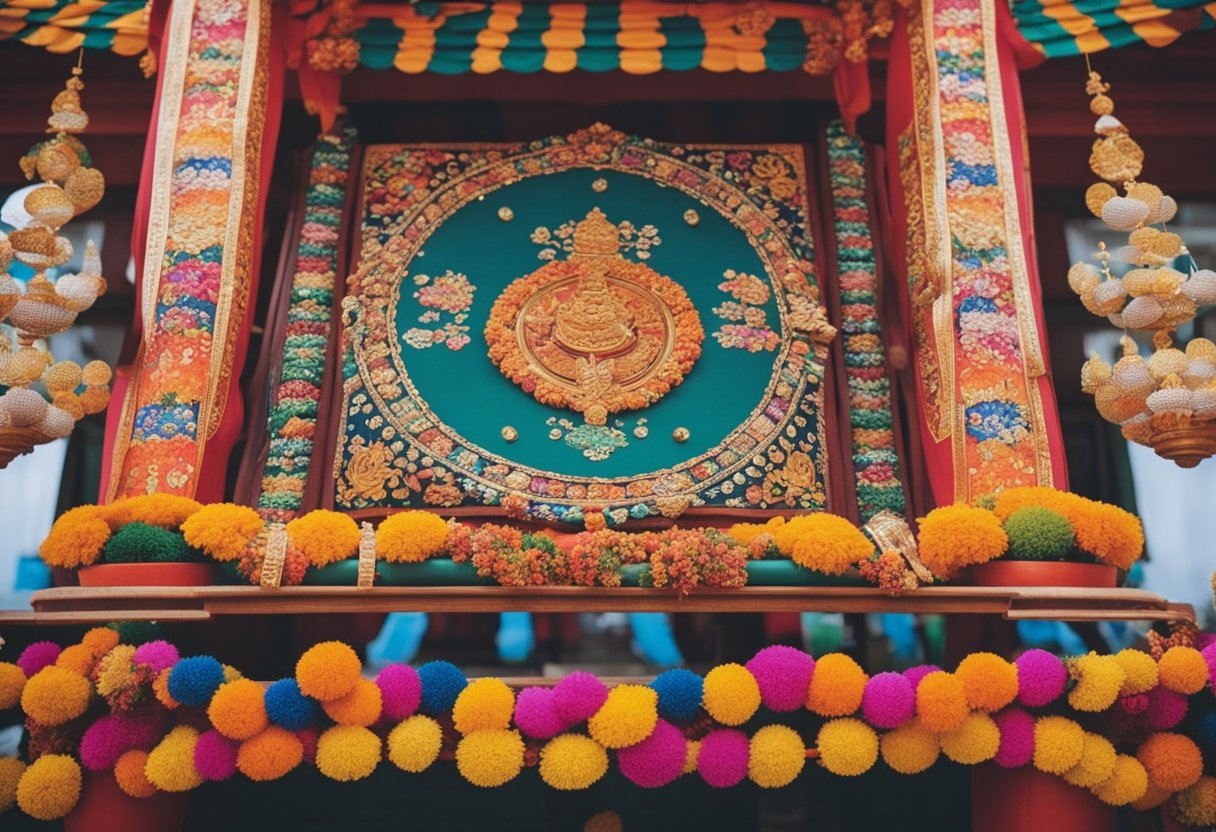
Updated On: April 20, 2024 by Marwa Alaa
Across cultures and time, colour has been a symbol of identity, status, and spirituality. It is interwoven in our festivals and cultural traditions, with each hue holding a distinct significance. From the red bindi dot worn in India, symbolising strength and courage, to the pure white wedding dresses in Western cultures representing innocence and peace, the language of colour in cultural traditions speaks to our deepest human experiences and beliefs.
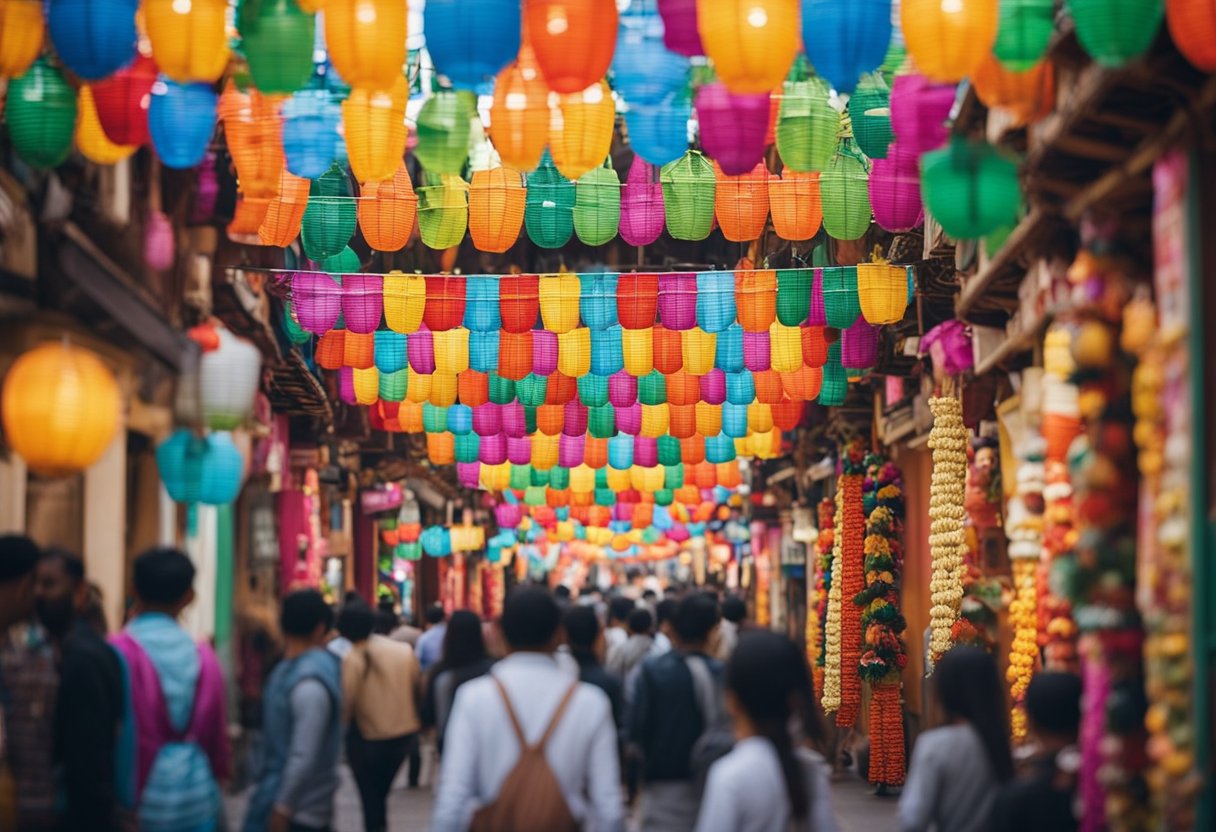
Colours play a fundamental role in the world’s festivals, too, acting as more than mere decoration. They convey messages of unity, joy, and reverence during celebrations that define our cultural identities. Consider the explosive vibrancy at India’s Holi, the Festival of Colours, a celebration that ushers in the spring and the triumph of good over evil with a cascade of colour. Or witness the profound symbolism of red in Chinese New Year festivities, ushering in prosperity and warding off negative energies. These traditions richly illustrate how colour is an integral part of our collective human tapestry.
Colour in Cultural Traditions: Historical Roots of Color in Culture
In delving into the historical roots of colour in culture, we uncover a rich tapestry of symbolism and traditions that have been integral to human expression throughout the ages.
Evolution of Color Symbolism
Colour symbolism has undergone a remarkable evolution across various cultures. In China, red has always been synonymous with good fortune and joy and is extensively used in festival decorations and weddings. Similarly, the vibrant use of colour in Indian culture is evident in festivals like Holi, where colours symbolise joy, love, and the triumph of good over evil.
In the context of religion, Hindu traditions associate blue with the divine, depicting many gods with blue skin, symbolising their infinite nature. These associations with colour are not arbitrary but hold deep historical significance, reflecting a community’s collective consciousness over millenniums.
Colour in Ancient Civilisations
The use of colour in ancient civilisations reveals much about their societies. In Egypt, the colour blue represented divinity and protection, a belief that was materialised in the vivid hues decorating their temples and tombs. Their complex understanding of colour’s symbolic power is also reflected in the consistent usage of green to represent rebirth and fertility.
Conversely, purple was highly valued in ancient Rome, where it was often reserved for the upper echelons of society, such as emperors and senators. This rich pigment, derived from the sea snail Murex, was expensive and challenging to produce, hence symbolising status and power.
Our exploration of colours within these historical contexts demonstrates how deeply interwoven they are within the tapestry of human culture, enriching traditions and festivals with layers of meaning and heritage.
Psychology of Color
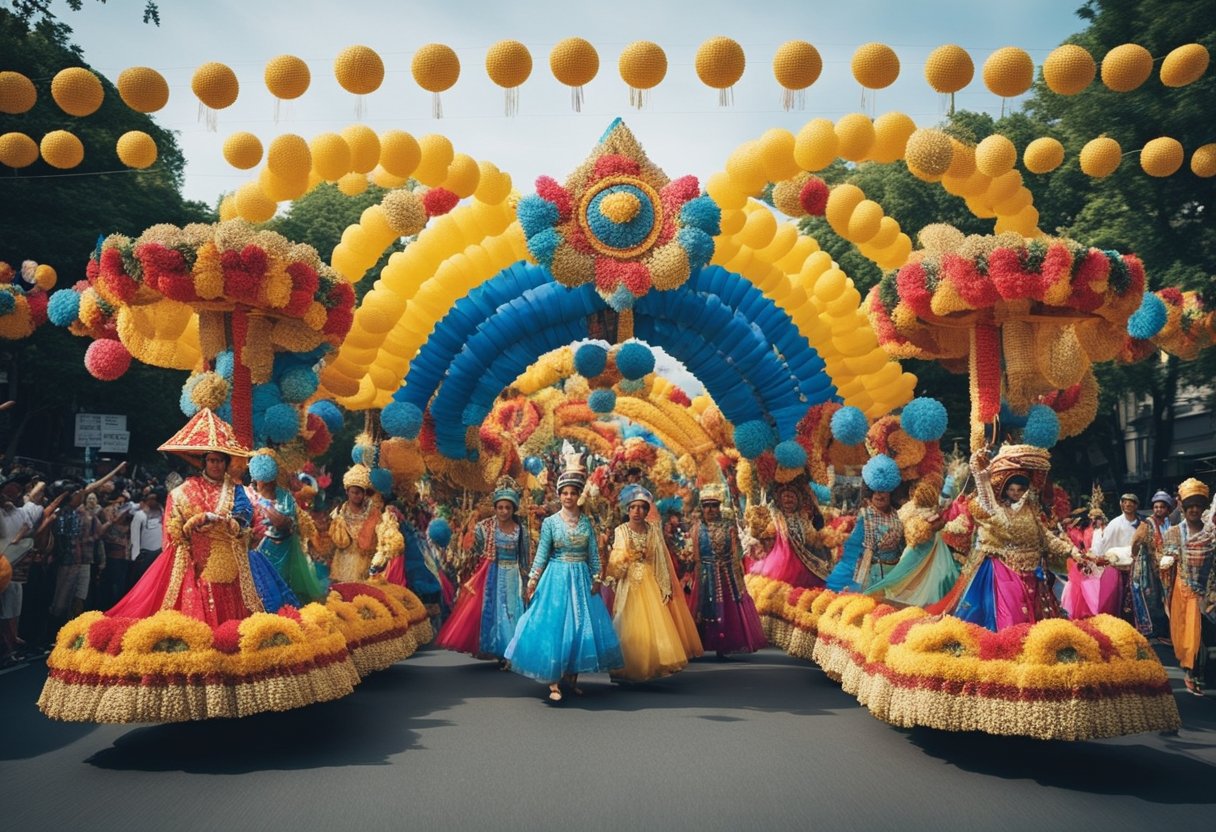
In understanding the significance of colour in cultural traditions and festivals, it’s important to focus on its psychological impact. Colours invoke specific emotional and psychological reactions that influence mood and energy, leading to behavioural changes.
Emotional and Psychological Reactions
Colours are more than mere visual stimuli; they have the power to elicit a range of emotions. A bright red, often associated with excitement, can increase energy levels and enhance mood, while blue is known to induce calmness and lower energy. Research into colour psychology substantiates that colours like green evoke feelings of peace and tranquillity, impacting our moods reliably across different cultural settings.
Colour and Behavioral Influences
Our response to colours extends beyond mere emotion; they can significantly influence our behaviour. The colour yellow is thought to stimulate mental activity and generate muscle energy. Understanding the profound effect of colour on our psychology can help us appreciate the use of specific colours in festivals and traditions and how they guide participant behaviour. For example, the dynamic vibrance of a festival could be attributed to the strategic use of colour, enhancing collective mood and energy.
Colour in Religious Practices and Symbolism
Colour holds profound significance within religious practices, often serving as a symbol of beliefs, traditions, and histories that define spiritual experiences across different faiths.
Christianity and Colour
In Christianity, colours are imbued with spiritual meaning. Red, for instance, is associated with the Passion of Christ and signifies both sacrifice and love. During liturgical seasons, specific colours epitomise different Christian principles: purple is used in Advent and Lent as a sign of penitence and preparation, while white denotes purity and joy during Christmas and Easter.
Hinduism and Colour
Hinduism celebrates colour as a vivid expression of spirituality. The deity Krishna is traditionally depicted with blue skin, symbolising his divine nature. Festivals, like Holi, unleash a dazzling array of colours, each conveying unique meanings; red reflects love and fertility, yellow is the colour of knowledge and learning, and green represents new beginnings and nature.
Islam and Colour
In Islam, colour holds both aesthetic and symbolic importance, particularly in the intricate designs of mosques and textiles. Green is especially revered, often regarded as the colour of Islam and spiritual life, reflecting its presence in the flags and decorations of many Islamic cultures. Moreover, the emphasis on modesty in Islamic practices influences the choice of subdued and less vibrant colours in daily attire.
Significance of Specific Colors

In cultural traditions and festivals, colours carry profound significance that transcends mere aesthetics. They embody deep symbolic meanings and influence emotions tied to each community’s values and beliefs.
Red: The Colour of Passion and Danger
Red, often seen as the colour of passion and danger, carries a duality of meaning. It is associated with life and vitality, representing prosperity and good fortune in Asian cultures. However, it echoes themes of aggression and alertness, indicating warnings or prohibiting actions in many contexts. In festivals, red frequently adorns costumes and decorations, symbolising high energy and celebration. The colour also ties into the sacred, with its connection to ritual and purifying fire, reflecting its powerful cultural significance.
White: Purity and Mourning
The colour white traditionally represents purity and innocence. It is a common choice for bridal attire, signifying the beginning of a new chapter in life. Nevertheless, this colour also speaks of mourning, especially within some Asian and African cultures, where it is worn during funerals to symbolise respect for the departed. Within these cultural frameworks, white carries a respectful solemnity at festivals honouring the deceased, contrasting the joy most often associated with the colour in Western bridal contexts.
Black: Power and Elegance
Black is a strong colour that frequently represents power and elegance. In fashion, a black dress suggests sophistication and timeless style. Likewise, blacks’ association with authority is viewed positively in various cultural garments and can often be seen in officials’ uniforms. On the contrary, it’s also linked to mourning and the remembrance of loved ones in Western societies, where its solemn tone reflects the gravity and remembrance at memorial services.
Colour in National and Cultural Identity
Colour serves as a fundamental element in representing national and cultural identities, reflected vividly through flags and traditional clothing. It conveys a sense of pride, unity, and distinct cultural expression.
Flags and National Pride
National flags are potent symbols of identity and unity. The colours and patterns within them often hold deep meanings and historical significance. Take the flag of India, for example, with its saffron representing courage and sacrifice, white for peace and truth, and green for faith and chivalry. The flag fosters national pride and is a prominent display during Independence Day celebrations. Similarly, Mexico’s flag, with its green symbolising hope and victory, white for purity, and red for the blood of national heroes, instils a sense of pride during national festivals like the Day of the Dead and Cinco de Mayo.
Cultural Costumes and Expression
Traditional clothing acts as a canvas on which the story of a culture is painted with colours signifying various aspects of heritage and values. In China, red is revered for symbolising good fortune and joy, especially evident in the qipao dresses worn during the Chinese New Year. In contrast, Japan’s kimono often incorporates a range of colours, each with its own meaning, such as purple for nobility and green for life and energy. Africa’s rich tapestry of nations expresses identity through vibrant and varied hues in traditional wear, with each region’s colours reflecting its unique cultural narrative. These garments are central to cultural festivities and are worn with honour, expressing individual and national identities.
Colour in Worldwide Festivals
Colours play a crucial role in worldwide festivals, capturing the essence of celebration and symbolizing a range of emotions and cultural values.
Holi: The Festival of Colours
Holi, celebrated primarily in India and across South Asia, is a vibrant display of joy and unity. Known as the Festival of Colours, this spring festival is famous for its lively and colourful atmosphere. Participants throw coloured powders, each hue representing significant aspects of life and culture. Red, for instance, symbolizes love and fertility, while green signifies new beginnings and harvest. Holi’s festive colours also reflect messages of happiness and the triumph of good over evil.
Dia de los Muertos: A Colourful Celebration of Life and Death
Dia de los Muertos, or the Day of the Dead, is a Mexican tradition honoured each year from the end of October through early November. Contrary to its sombre-sounding name, the festival is a spirited commemoration of the deceased. The celebration is marked with ofrendas (altars) adorned with orange marigolds, which are believed to guide the spirits home. Multicoloured sugar skulls and vividly painted faces also play a central role in the festivities. Each colour used in Dia de los Muertos has a purpose; for example, purple stands for mourning, while white symbolizes hope and life’s continuity.
Colours in these festivals are not just for beautification; they’re imbued with deep meanings that connect communities, evoke emotions, and celebrate life’s cycle from birth to death.
The Role of Color in Marriage and Fertility Traditions
Colours play a pivotal role in symbolising various aspects such as fertility, prosperity, and love within marriage and fertility traditions. Our exploration will specifically look at how these symbols manifest in wedding ceremonies and festivals.
Wedding Colors Across Cultures
In many cultures, brides are adorned in specific colours on their wedding day, each signifying unique aspects of marriage and the life to follow. Chinese brides, for example, often wear red, a hue historically connected to good luck and prosperity. This vibrant colour is believed to bring honour to the bride and her family while also symbolising love and fertility.
Festivals for Fertility and Prosperity
Fertility and prosperity are celebrated worldwide through various festivals, each with a unique colour palette symbolising these wishes. One can witness such festivals where yellow represents vitality, suggesting a bright future filled with children and success, linking closely with themes of fertility and youth (What colours symbolize fertility?). These events are rich tapestries of cultural heritage, reflecting the hopes and dreams of their people.
Economic Influence of Colour
Colour carries significant weight in the economic realm, particularly within the spheres of branding and marketing. It can influence consumer behaviour, denote brand identity, and play a pivotal role in driving sales, all of which contribute to the economic value and success of a business.
Colour and Branding in Business
In the business world, a brand’s colour palette is more than mere decoration; it’s a critical component of its identity. Colour choice can reflect a brand’s values and can be a decisive factor in wealth and status. For instance, the deliberate use of green by companies linked to environmental sustainability or health services not only conveys their values but also distinguishes them in the market. When consumers identify a particular shade of blue with a tech giant or green with a nature-friendly brand, this recognition becomes part of the brand’s economic value.
The Impact of Colour on Marketing and Sales
The strategic use of colour in marketing materials can have a direct effect on sales. It’s known that certain colours can trigger psychological responses and, as a result, influence purchasing decisions. A study might reveal that red generates a sense of urgency, potentially boosting sale events, whereas blue might evoke trust and dependability, enhancing customer loyalty. These colour associations are crucial for successful marketing strategies and, by extension, the profitability of a company.
Colour and Social Movements
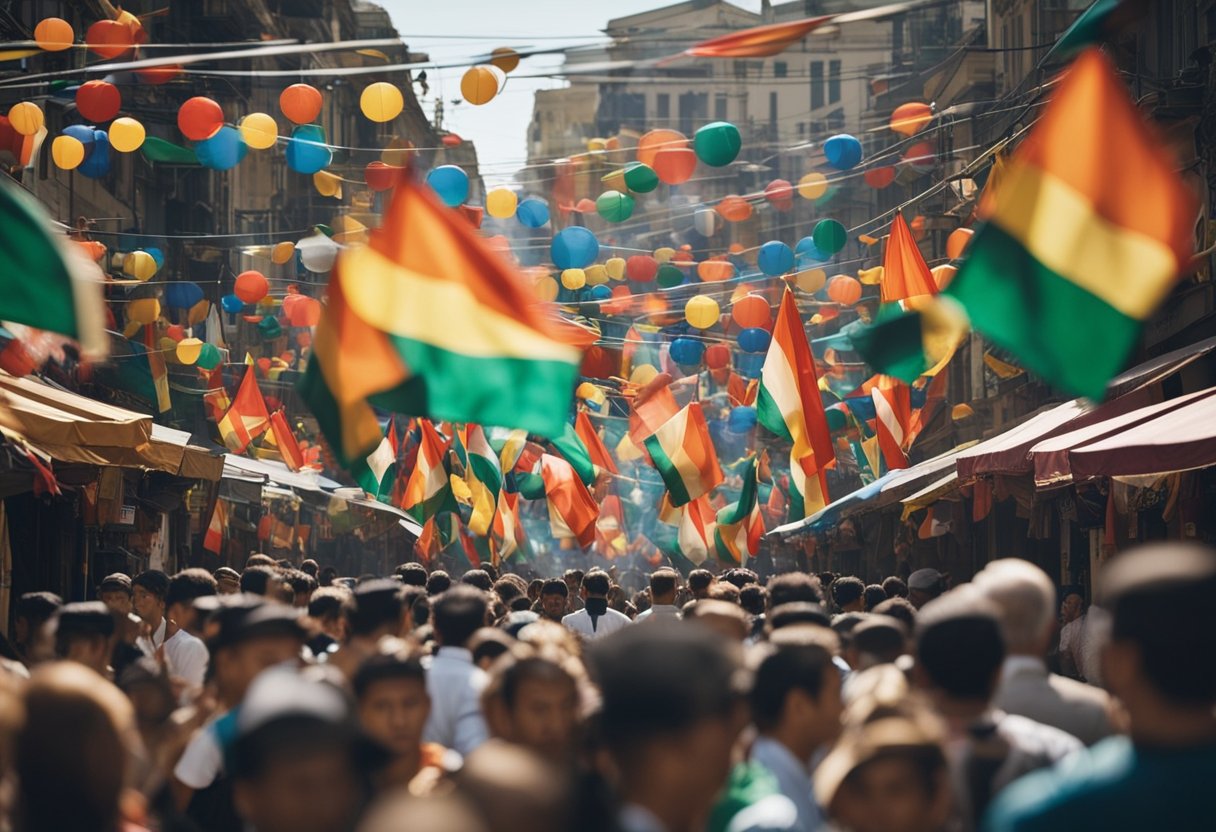
Colours serve as powerful symbols in social movements, signalling shared values and objectives or demarcating lines of division. Their visual impact can unite people under a common cause or emphasise the distinct aims of separate groups.
Colour as a Tool for Unity and Separation
Colours often facilitate a deep sense of unity among individuals. For example, certain movements adopt a specific colour to create an immediate visual signifier of their protest or support. A notable instance is the green worn worldwide on St. Patrick’s Day, symbolising Irish heritage and celebrating cultural identity. It’s a vivid demonstration of the universal human desire for recognition and unity.
Conversely, colours can illustrate separation. Different factions might use unique colours to distinguish themselves from others, highlighting the distinctions in their goals or ideologies. Such differentiation can be a benign expression of diversity or, at times, a representation of deeper social or political divides.
The Use of Colour in Political and Social Campaigns
In political and social campaigns, colour becomes a form of political symbolism. It encapsulates complex ideas in a way that is easily communicated and recognised across cultural lines. The use of colours in campaigns, from ribbons to dress codes, signals solidarity and raises awareness. For instance, the red poppy has become a universal symbol of remembrance and protection of veterans’ welfare. Organisations and movements leverage these symbols to marshal support and foster collective identity, especially potent in galvanising social media campaigns.
Each colour employed by activists and campaigners is chosen for its capacity to evoke emotion and convey a message that aligns with the causes they champion. Their strategic use in both virtual and physical spaces plays an integral role in the mobilisation and perseverance of social movements around the globe.
Artistic Representation and the Use of Color
We explore how colour transcends its visual component, becoming a dynamic force within artistic practices and embodying energy, emotion, and narrative.
The Role of Color in Fine Art
Artistic mediums have long harnessed the evocative power of colour to convey energy and emotion. In fine art, the palette chosen by an artist is instrumental in shaping the viewer’s experience. For example, the use of warm hues can depict the vitality of a scene, while cooler tones might suggest tranquillity. Consider the vibrant colours of the Holi festival represented in Indian art, which carry profound cultural significance and evoke strong emotional responses.
The contrast and harmony of colours in paintings engage us, igniting reactions that are both instinctual and cultivated. An artist’s choice of hues can elicit a visceral response, aligning with specific cultural contexts or universally acknowledged emotional cues.
Colour in Performing Arts and Cinema
In the realm of performing arts and cinema, colour takes on a performative character, not just enhancing the visual aesthetic but also constructing meaning within narratives. In theatre productions, costumes and lighting use colour to symbolise character traits or denote shifts in mood and plot.
Similarly, in cinema, colour grading is a pivotal process. It can alter the atmosphere of a scene subtly or dramatically, guiding the audience emotionally and highlighting elements of thematic importance. The blues in a film might evoke sadness, while a saturated red could raise the intensity of a scene. It’s the careful juxtaposition of these hues that can deliver a powerful cinematic experience.
By understanding the nuances of colour, we engage more deeply with artistic expressions across various media, enriching our appreciation for the intricate ways in which art reflects and influences life.
The Impact of Colour on Fashion and Design
Colour plays a pivotal role in fashion and design, acting as a powerful form of non-verbal communication. Designers leverage colour to evoke elegance in high-fashion pieces, often choosing shades that resonate with their brand identity and desired aesthetic. In the context of silk garments, the choice of colour can significantly alter the perception of the material’s luxuriousness.
- Fashion: Colours in fashion reflect societal trends and often symbolise youth and vitality. Bright, vivid hues often convey a sense of energy, while muted tones can suggest sophistication and understated grace.
- Design: Colour in design dictates the mood and style of environments, from interior spaces to graphic elements. It is crucial in creating visual coherence and can command attention or drive a narrative within a design concept.
Incorporating colour strategically can be seen in the use of bold hues for statement pieces or seasonal collections that capture the spirit of the times. For example, the association of colours with emotions provides designers with a tool to create compelling narratives through their work.
Furthermore, the adoption of colours from different cultural traditions and festivals into fashion collections showcases the industry’s recognition of the world’s diverse heritage. This not only celebrates cultural diversity but also enhances the wearer’s experience by connecting them to global traditions and stories.
We recognise that colours carry various meanings across cultures, influencing the selection of palettes for international markets to ensure cultural sensitivity and relevance. While handling silk, designers must remember that its sheen can affect the colour’s appearance, demanding careful consideration to maintain the intended impression of elegance.
In essence, colour is an indispensable element in the realm of fashion and design, shaping consumer perceptions and experiences while reflecting broader cultural sentiments and traditions.
Frequently Asked Questions
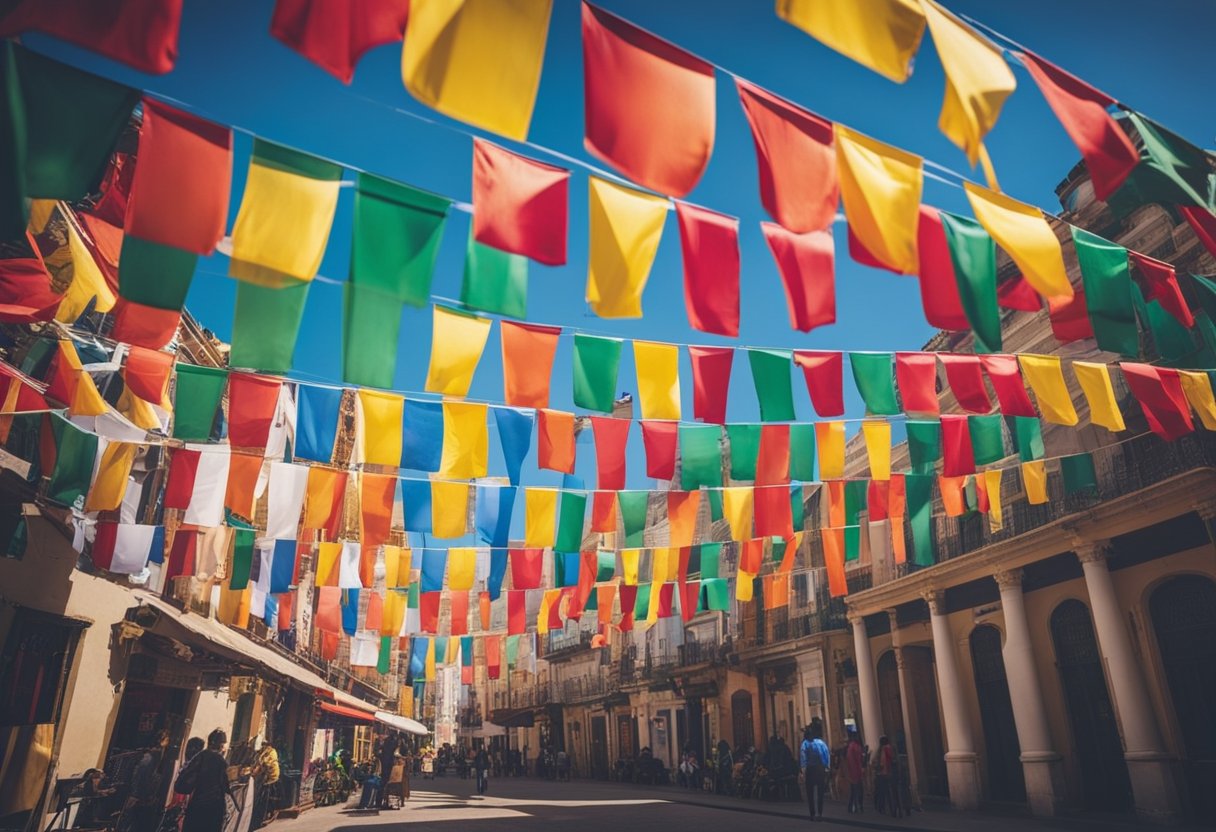
In this section, we will address some of the most commonly posed queries regarding the diverse meanings and significance that colours hold within various cultural traditions and festivals around the world. These insights highlight the profound impact that colour has on cultural identity and celebratory practices.
How do colours possess varying meanings across global cultures?
Colours are deeply embedded in the fabric of cultural identities, often carrying distinct meanings that vary from one region to another. For instance, red is considered prosperous in Asian contexts, symbolising long life and good luck, particularly in China, where it denotes honour and success.
Why is colour representation significant in traditional and festival contexts?
Colours in festivals and traditions are essential as they are a form of non-verbal communication that encapsulates the values, emotions, and beliefs of a community. For example, red’s association with warmth and energy is commonly leveraged in festivals to evoke a sense of excitement.
What spiritual meanings are commonly attached to specific colours?
Specific colours often embody significant spiritual meanings within religious practices. Green, for example, is frequently associated with rebirth and renewal in various cultures, while white may symbolise purity and peace.
In what ways can certain colours be considered offensive in various cultures?
Colours can carry negative connotations depending on the cultural context. In some countries, white is worn for mourning rather than for celebrations, making its use in a joyful context potentially offensive. Understanding these cultural nuances is key to avoiding unintended disrespect.
How do cultural traditions influence the symbolism attached to colours?
Cultural traditions shape and reinforce the symbolism attached to colours in profound ways. The continuous practice of these traditions helps to embed the colour symbolism more deeply into the collective consciousness of a culture.
What role do colours play in Mexican cultural practices and beliefs?
In Mexico, colours are integral to cultural expression, reflecting the nation’s rich history and spirited traditions. Colours like vibrant pink, turquoise, and yellow adorn festivals and art, representing aspects like celebration, directionality in spirituality, and ties to the natural world.






